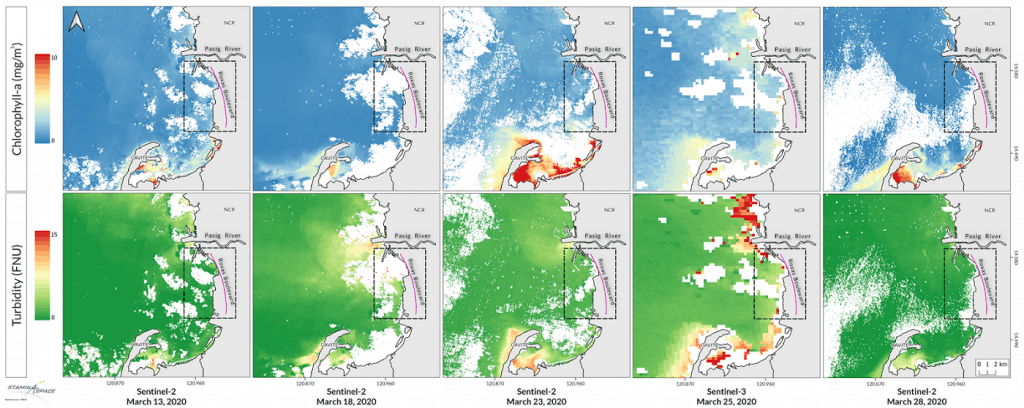After analyzing satellite images of Manila Bay having “Boracay-like” turquoise waters, a group of researchers said that the sudden change in color was possibly caused by pollution.
On March 25, photos and videos of Manila Bay in an unusually “brighter” and “bluer” state went viral on social media. Many thought the natural harbor’s change in appearance was brought about by the enhanced community quarantine (ECQ) placed on Luzon, which was reducing human activity and pollutants.
But using images from the European Space Agency’s Sentinel-2 and Sentinel-3, the Sustained Support for Local Space Technology & Applications Mastery, Innovation and Advancement (STAMINA4Space) observed in a blog post that the bay had double than the usual water turbidity level. They said this could mean the change in color was due to high water pollution.

Some of those who were skeptical of the sudden change chalked it up to algal bloom or the excessive growth of algae in water but the images showed that the level of chlorophyll-a did not increase significantly, so the turquoise waters could not be attributed to algal bloom.
The researchers also highlighted that “hotspots” such as Pasig River and Bacoor Bay could have influenced the polluted state of Manila Bay.
On March 28, a significant decline in chlorophyll-a and turbidity was observed, the STAMINA4Space further said.
Earlier, the Microbial Oceanography Laboratory of the Marine Science Institute said that because Manila Bay itself is also categorized as a pollution hotspot, two or three weeks of ECQ will not be enough to determine if it has become clean and safe.
It also urged for further research and investigation into any possible source of pollutants and violation of environmental laws that may have caused the change in color.